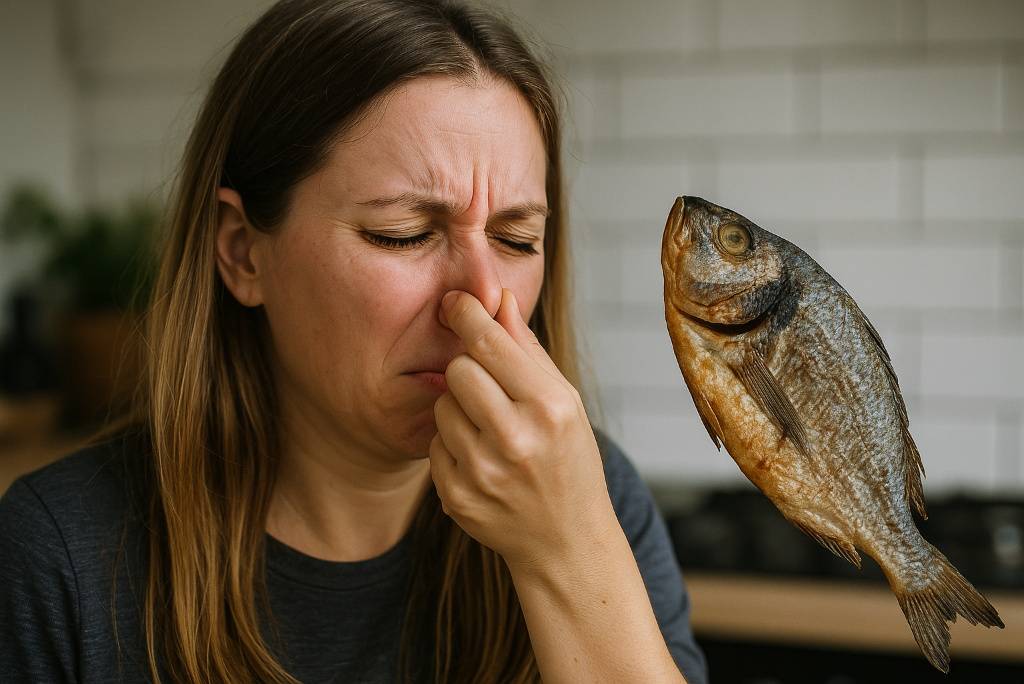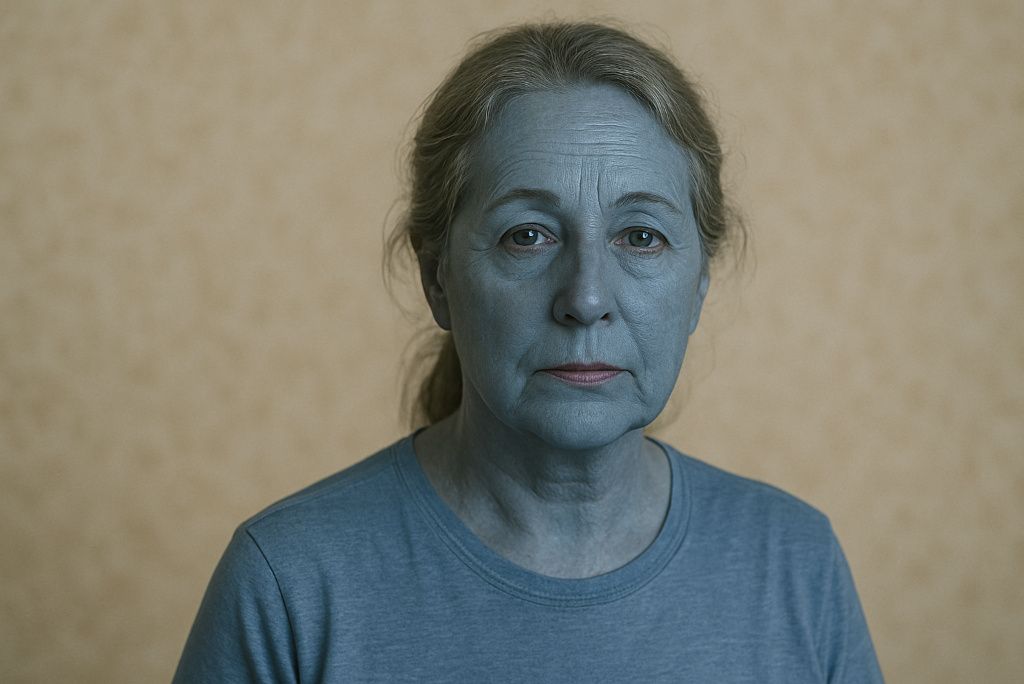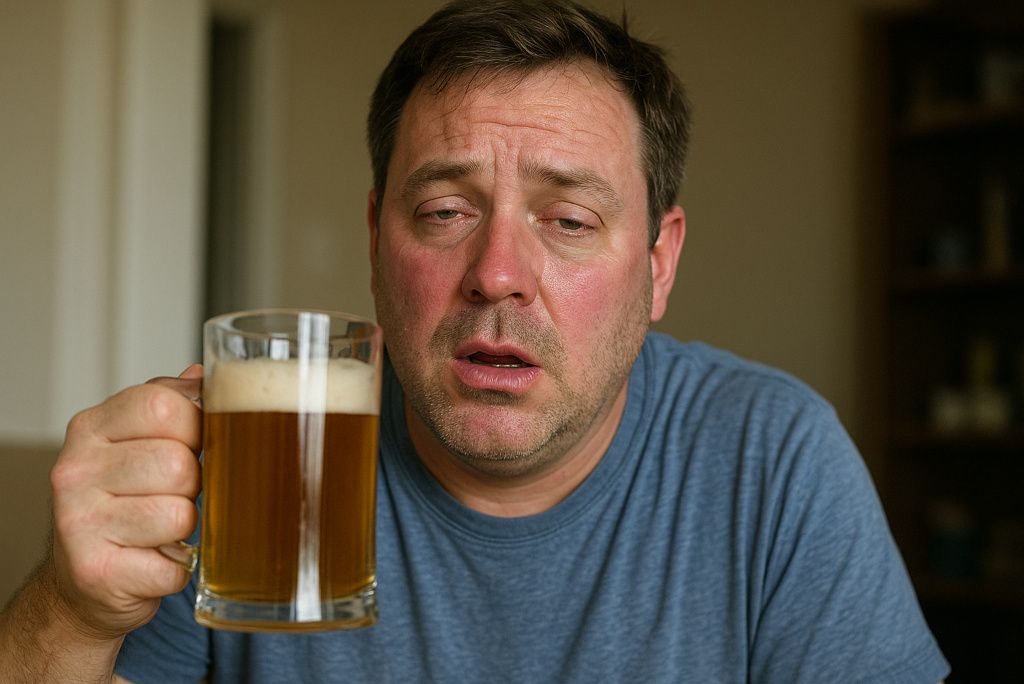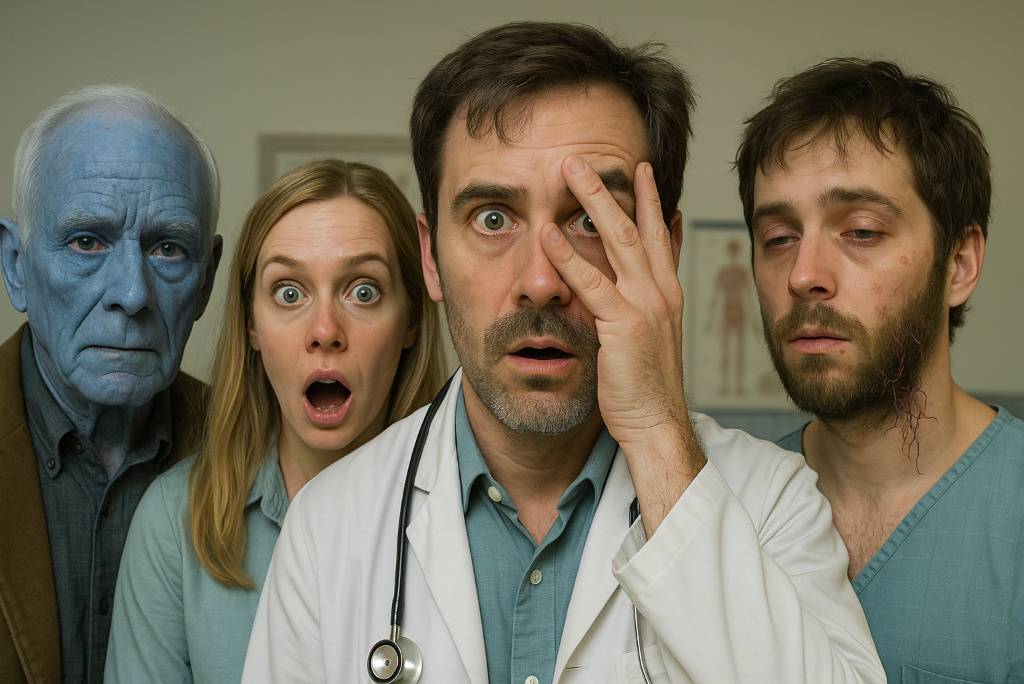It’s easy to think the world of medicine has seen it all, yet some diseases sound so bizarre they’re often mistaken for jokes or internet myths. From syndromes that turn your skin blue to conditions that make you speak in an accent overnight, these real disorders remind us how strange—and fascinating—the human body and brain can be.
1. Alien Hand Syndrome

Alien Hand Syndrome sounds like something from a sci-fi movie, but it’s a neurological disorder where a person’s hand seems to act on its own, performing tasks without conscious control. People with this condition may find their hands unbuttoning a shirt they just buttoned or grabbing objects spontaneously.
It’s most commonly linked to brain surgery, strokes, or brain injuries that affect the corpus callosum—the structure connecting the two hemispheres of the brain. This rare disorder has even inspired movie plots, like the comedic “Dr. Strangelove.” While treatment focuses on therapy and sometimes medications, it can be life-altering for those affected. Read more about real cases from the National Institutes of Health here.
2. Exploding Head Syndrome

Despite the dramatic name, Exploding Head Syndrome doesn’t involve actual explosions. Instead, sufferers hear sudden loud noises—like gunshots or cymbals crashing—just as they’re falling asleep or waking up. The sounds are purely in their head, caused by brief neurological “misfires.”
Though harmless, these episodes can be terrifying and disruptive, sometimes leading to sleep anxiety. The condition is surprisingly common, affecting up to 10% of people at some point in their lives. Doctors usually reassure patients that there’s no brain damage involved. Learn more from the Sleep Foundation here.
3. Foreign Accent Syndrome

Imagine waking up and speaking English with a perfect French or Chinese accent, even if you’ve never travelled abroad. That’s the strange reality for people with Foreign Accent Syndrome, typically following a brain injury or stroke affecting speech centres. Although rare, cases have included a British woman speaking with a Chinese-sounding accent and an American adopting a French lilt. The condition often affects pitch, rhythm, and pronunciation, making it sound like a new accent rather than a true language change.
4. Cotard’s Delusion

Also known as “Walking Corpse Syndrome,” Cotard’s Delusion involves the intense belief that one is dead, does not exist, or has lost vital organs or blood. Patients might insist they’re rotting or that their body is hollow. Often linked with severe depression, psychotic disorders, or neurological damage, it can lead to dangerous self-neglect. Though extremely rare, documented cases have included individuals refusing to eat because they believed they no longer had a stomach. Treatment usually involves psychiatric care and medications.
5. Alice in Wonderland Syndrome

Named after Lewis Carroll’s famous novel, Alice in Wonderland Syndrome causes distortions in perception—objects appear larger or smaller than they are, or time seems to slow down. People might feel their own body parts are shrinking or growing. Though linked to migraines, infections, and epilepsy, it’s not fully understood. Episodes can last seconds or minutes and are most common in children. Interestingly, Carroll himself is believed to have suffered from migraines and may have experienced these distortions.
6. Stendhal Syndrome

Visiting a beautiful museum might make you feel inspired, but for some, it can trigger fainting, dizziness, or hallucinations. Stendhal Syndrome is a psychosomatic condition causing physical and emotional overload when exposed to art or overwhelming beauty. Named after the 19th-century French author Stendhal, who described such sensations in Florence, it’s been reported among tourists at the Uffizi Gallery. Though rare, it highlights the powerful connection between art and the brain.
7. Pica

Pica is a compulsive craving to eat non-food substances like chalk, dirt, paper, or soap. While occasional curiosity is normal in toddlers, persistent urges in older children or adults may signal iron or zinc deficiencies, pregnancy cravings, or mental health disorders like OCD. Pica can cause dangerous health issues, including poisoning or bowel blockages. Treatment often involves addressing nutritional deficiencies and providing therapy. Learn more from the Mayo Clinic here.
8. Fish Odor Syndrome (Trimethylaminuria)

Trimethylaminuria, or Fish Odour Syndrome, is a metabolic disorder where the body can’t break down trimethylamine, a chemical that smells strongly of rotting fish. The compound builds up and gets released through sweat, breath, and urine. It’s harmless physically, but can be devastating socially and emotionally, leading sufferers to isolate themselves. Management focuses on diet adjustments to reduce the chemicals’ production, such as avoiding fish, eggs, and certain legumes.
9. Hypertrichosis

Sometimes called “Werewolf Syndrome,” hypertrichosis causes excessive hair growth all over the body. It can be congenital (present at birth) or acquired later due to medication, cancer, or metabolic disorders. Historical sideshow figures like Julia Pastrana, dubbed the “Bearded Lady,” likely suffered from congenital hypertrichosis. While laser hair removal can help manage symptoms, there’s no cure. This rare condition can carry significant social stigma. Learn more from DermNet here.
10. Blue Skin Disorder (Methemoglobinemia)

Methaemoglobinemia results in bluish skin because haemoglobin can’t release oxygen effectively, causing a lack of proper blood oxygenation. In some cases, it’s inherited, while in others, it’s triggered by exposure to certain medications or chemicals. The most famous example is the “Blue Fugates” of Kentucky, a family whose genetic mutation caused them to appear blue for generations. Treatment can involve medications like methylene blue to restore normal haemoglobin function.
11. Morgellons Disease

Morgellons involves persistent itching and the sensation of crawling under the skin, often accompanied by fibres or threads emerging from lesions. Some researchers suggest it’s a delusional disorder, while others argue it’s a genuine dermatological condition linked to infections like Lyme disease. The debate continues, leaving patients frustrated and sometimes dismissed by healthcare providers. The CDC concluded there’s no clear infectious cause but acknowledges the symptoms are real and distressing.
12. Capgras Syndrome

Capgras Syndrome causes people to believe someone close to them—a spouse, child, or friend—has been replaced by an identical impostor. It’s associated with brain injuries, dementia, and psychiatric disorders like schizophrenia. Though rare, it’s profoundly unsettling for patients and families, making caregiving especially challenging. Treatment often involves managing the underlying condition and antipsychotic medications. Learn more from Healthline here.
13. Jumping Frenchmen of Maine

This condition sounds like folklore but describes a genuine, exaggerated startle reflex observed in 19th-century French-Canadian lumberjacks in Maine. People would jump, yell, or obey sudden commands without thinking, like repeating words or even striking someone if startled. The cause remains mysterious, though it’s categorised as a cultural startle syndrome, similar to conditions found in other parts of the world. Read about this odd disorder from Rare Diseases here.
14. Body Integrity Dysphoria (BID)

BID is a psychological condition where individuals feel an intense desire to amputate healthy limbs because they perceive them as “foreign” to their body image. It’s deeply distressing and not driven by vanity but rather a profound sense of bodily mismatch. Though rare, some sufferers seek surgery, which raises ethical and medical debates. Treatment is challenging and often focuses on psychotherapy.
15. Auto-Brewery Syndrome

Imagine getting drunk without touching a drop of alcohol. Auto-Brewery Syndrome is a rare condition where gut microbes ferment carbohydrates into alcohol, causing intoxication from everyday foods like bread or pasta. Patients may experience slurred speech, dizziness, or legal trouble due to unexpected blood alcohol levels. It’s often linked to an overgrowth of yeast in the intestines, sometimes after antibiotic use. Treatment focuses on diet changes and antifungal medications.
Disclaimer: This article is for informational purposes only and is not a substitute for professional medical advice, diagnosis, or treatment. Always seek the advice of your physician or other qualified health providers with any questions you may have regarding a medical condition.

